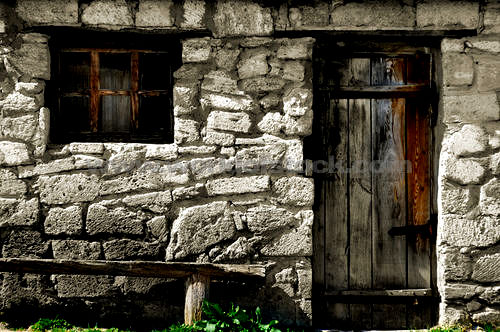 living stones
living stones The House of the Second Mason
 Thursday, March 8, 2012 at 12:04AM
Thursday, March 8, 2012 at 12:04AM  Once, somewhere in the Northern Highlands, among the hills of rock, two masons set out to build their homes. In the thin light of a new Spring morning, they each gathered stones together for their task.
Once, somewhere in the Northern Highlands, among the hills of rock, two masons set out to build their homes. In the thin light of a new Spring morning, they each gathered stones together for their task.
The first mason selected stones suited for the work. He carted them to his site and quickly joined them together into a house both sturdy and safe. Because he finished his work quickly he built another house. And another. And still another until the landscape was filled with houses of stone, all sturdy and safe, but each one cold and empty.
The second mason made a curious choice of building materials, for among the Highlands was a quivering mountain of living stones. These stones were no bigger than those used by the first mason. They were no stronger or better shaped, nor any more lovely than the others. But they were alive: they spoke, they sang, they even argued, and somehow they could move of their own accord, even after being selected by the second mason.
As the mason piled the living stones into his wagon they asked where he was taking them. When they saw the plans for his house some cheered and sang while others complained and wandered away. They wanted no part of his house. Still the mason joined the stones together, building the walls and arches and hearth of a home fit for his purpose.
But because he had chosen living stones, the house was never completed. Some stones jumped from the cart before they arrived at the building. The work was forever unfinished as the mason returned to the mountain quarry again and again for more supply. Other stones allowed the mason to place them in the wall but failed to connect with the wall-mates on their left and right: they argued, they cried, and when they had could stand it no more, they left.
Still he continued to build. Always the house was incomplete. Some mornings the Mason would return to work only to discover that the stones had re-arranged themselves in the night. The Mason made curious choice to leave holes in the walls where the stones had fled, because (he said) “I selected that stone and crafted a place for it alone. Another cannot take it’s place.”
From time to time a missing stone would wander back to the house and the Mason lovingly fitted it back in the wall again. Some stones stayed in place forevermore, but some left (and returned) time and again. Still he continued to build. Room upon room he added, not one of them finished until there grew an unwieldy mansion both large and incomplete. In this mansion he chose to live, year after year in fellowship with the living stones that breathed in every wall.
Passers-by would stop and stare in amazement. Many laughed at the sprawling mess of a mansion that had grown on the landscape. It seemed without design and devoid of all reason.
“Why don’t you use the stones all the other masons use?” they laughed. “You could finish your house in days and be done with the work.”
“This building is my work,” he replied. “And as for the living stones it is true--they are a bother: but I could never build with dead ones, for this is my home, and I’ve come that they might have life.”


Reader Comments (6)
A very nice parable/fable.
I love this parable Ray. Thanks so much for writing it!
Thanks (twice!).
"It seemed without design and devoid of all reason."
Yes, it really does seem that way much of the time, doesn't it? And yet, we so desperately want a clear purpose and goal—a moment of completion we can celebrate and cross off our to-do list before moving on. Thanks for the reminder that those things ultimately aren't the point.
Hi Kristin: It's just a hunch, but I suspect the reason we think the house is without design is that we miss his intent--to be with us. We insist on utility, he desires relationship.
I find this writing to be incredibly profound & perspective shifting. We have used this writing as a conversation starter in our church for our core community gatherings & the discussion has been extremely fun to hear. We understand that Jesus emphasizes the importance of community, but how willing are we to sacrifice for it?
Thank you For this Ray!